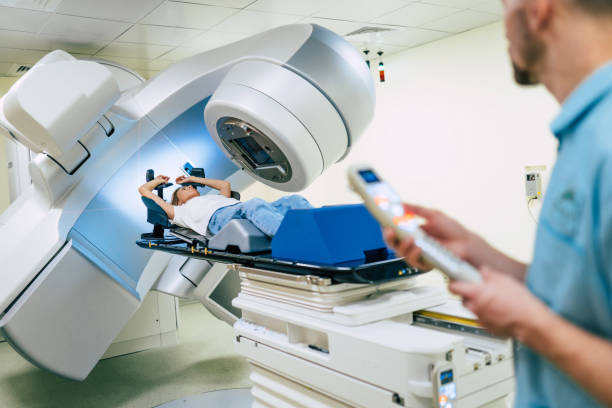Oncology information systems: New product launches and collaborations to improve quality of care
Article by : Pratik Kirve
The increase in prevalence of cancer, availability of different types of cancer treatments, and efficient management of treatment led to the development of oncology information systems. Clinics, healthcare organizations, and hospitals began utilization of oncology information systems for management of the entire treatment.
Many functions such as predicting outcomes, planning treatments, and sharing patient information can be carried out with the help of these systems. In addition, they help clinicians, physicians, and surgeons in selecting treatment options for increasing survival rates of patients suffering from cancer. Healthcare organizations have been modernizing their infrastructure and the adoption of oncology information systems is increasing. Hospitals & oncology clinics are the major users of these systems across the globe.
The Software
A huge amount of data and images are generated during different phases of cancer treatment.
For maintaining different data sets such as patient data, therapy outcomes, and radiology images, an efficient management system is essential. Moreover, these systems facilitate maintaining documentation, treatment patterns, and health records. New systems are digitized, so it becomes easier to store the results and access whenever it is needed. The automation tools are utilized in innovative systems. This enables faster processing and reduced manual work for healthcare workers.
The inbuilt software in oncology information systems assists in streamlining the workflow and simplifying the decision making process. They offer comprehensive information about clinical diagnoses, personal & medical histories, planned treatment processes, and post-treatment outcomes. These systems track and monitor different modalities related to oncology care along with storing data.
Market players have adopted the strategy of new product launches and collaborations for improving safety and quality of care through oncology information systems. Leading market players have been offering their products containing various features, state of the art software, and a single platform through which medical professionals can access the entire information about the patients. In addition, they are collaborating with clinics, healthcare organizations, and hospitals for implementing their systems along with other tools to carry out successful treatment.
Leading market players such as RaySearch Laboratories and Varian launched their innovative systems to cater to different needs of healthcare systems in management of cancer treatments. Moreover, they carried out upgrades of existing systems to assist healthcare professionals in treatment planning and execution.
The major aim behind the development of such systems is to improve quality of care, outcomes, and lives of patients going through different types of cancers.
The Technology & AI
Advanced technologies such as artificial intelligence (AI) and machine learning are utilized in these systems to improve outcomes and overall management. Collaborations are expected to help patients with combined expertise of companies and organizations involved. The demand for innovative oncology information systems is expected to increase in the coming years. According to the report published by Allied Market Research, the global oncology information systems market is expected to reach $5.53 billion by 2030.

Following are some of the activities taking place across the world.
Market players have been launching innovative oncology information systems for offering extensive cancer care. RaySearch Laboratories launched RayCare oncology information system to provide information and planning tools for treatment of cancer.
Its latest system, RayCare 5B, contains features to automate the clinical workflow and conduct radiation therapy. The implementation of this system provides a control over scheduling of treatments and resources. An effective allocation of machines can be carried out by taking treatment requirements, patient preferences, and staff schedules.
Equipped with the state of the art platform, this system is developed for ensuring safety, stability, and quality. All the resources of an oncology center can be connected together, and the integration with hospital information systems is possible. Advanced technologies such as machine learning are utilized for improving workflow efficiency, improving quality, and managing resources.
Treatments
The company upgraded its RayCare product with the launch of RayCare 5B. The primary aim behind this development was to improve and extend an access to information regarding planning and carrying out radiotherapy treatments. Providing ease in access to the patient-specific radiotherapy information including delivery of doses, prescriptions, and treatments course is made possible.
These improvements are expected to improve the workflows, transfer data rapidly, and enhance operational efficiency throughout the course of radiation treatment. Another improvement in RayCare 5B involves the support provided for structured grading of side effects in patient charts as per the standards set by the industry. This feature enables surgeons, clinicians, and physicians in monitoring and documenting these effects throughout the treatment. The upgrades in the patient charts are also made visible in the patient summary workspace. This feature offers the healthcare team a view to the important patient information.
Such upgrades are aimed at improving the current systems and provide a comprehensive view about the patient information to healthcare professionals.

RaySearch Laboratories has been collaborating with various medical service and healthcare organizations for the usage of RayCare in cancer care.
The company collaborated with Swiss Medical Network for treatment of patients with the oncology information system RayCare and Accuray CyberKnife radiation treatment delivery system. La Clinique Générale-Beaulieu, which is a part of Swiss Medical Network, has been utilizing the oncology information system to gain a comprehensive picture of treatments and improve efficiency.
The clinic signed an agreement with RaySearch for purchase of RayCare. The clinic highlighted that it successfully carried out the treatment with RayCare and CyberKnife. Johan Löf, founder and CEO, RaySearch, highlighted that the successful completion of treatment emphasized the effectiveness of RayCare as a single oncology information system that can be used with other machines.
This collaboration outlines that the oncology information systems can prove to be effective in treatment of cancer patients.
Research
RaySearch Laboratories continued collaboration activities with another Swiss healthcare provider for offering its oncology information system and improving patient care. The company collaborated with Centre hospitalier universitaire vaudois (CHUV). Under the collaboration agreement, the Center will replace its existing oncology information system with RayCare for optimizing workflows and managing treatment efficiently. This system will help in improved decision making, treatment quality, and operation efficiency.
The single software will connect radiation oncology activities and help in efficient management of workflows. The major objective behind collaboration is to improve quality and safety of treatments.
The launch of innovative oncology systems continues with market players developing systems for carrying out treatment and offering support to patients suffering from cancer. Varian launched its ARIA Oncology Information System for improving practice workflows, streamlining administrative processes, and improving financial administrations. This system enables physicians to evaluate the data related to diagnosis, develop clinical protocols, monitor radiation-related doses, and review images related to treatments.
They can also utilize rule-based workflows, create oncology-specific plans, and enable decision making to support cancer patients in every way.
One of the most important features includes the development of personalized care pathways. Maintaining the complete problem lists, automating the cancer staging, assessing physical exams, and viewing lab reports is possible with implementation of the new system. It provides the functionality to create real-time information about treatment responses, clinical outcomes, survival rates, and others.
The system can share the data and images related to diagnosis and treatments with staff of different departments such as pathology, pharmacy, radiology, billing, and insurance. These innovative systems play a crucial role in efficient management of treatments and support patients at every stage by availing essential data at a single place.

Author Bio – Pratik Kirve is writer, blogger, and sport enthusiast.
He holds a bachelor degree in Electronics and Telecommunication Engineering, and is currently working as a Team Lead – Content Writing at Allied Market Research.
He has an avid interest in writing across different verticals. When he is not following the updates and trends, he spends his time reading, writing poetry, and playing football. He can be reached at pratik.kirve@alliedanalytics.com











More Stories
The Sensual Massage – Unlocks Your Potential
Increase Quality of Life with Pectus Carinatum Treatment
Mac Shortcuts: Top 6 Mac Tools to Make Your Life Easier